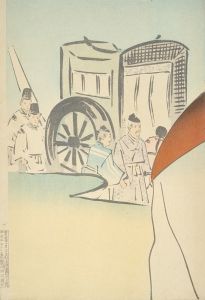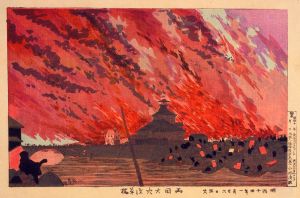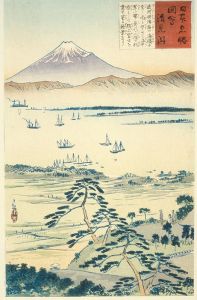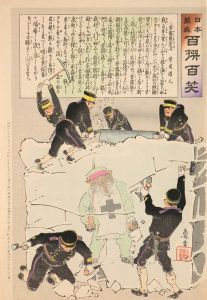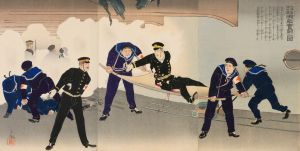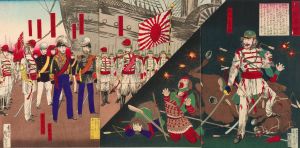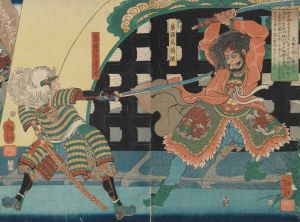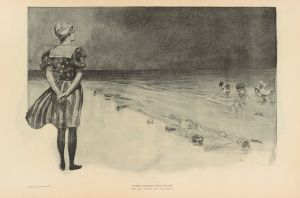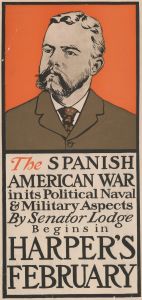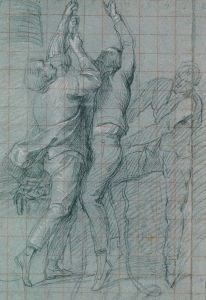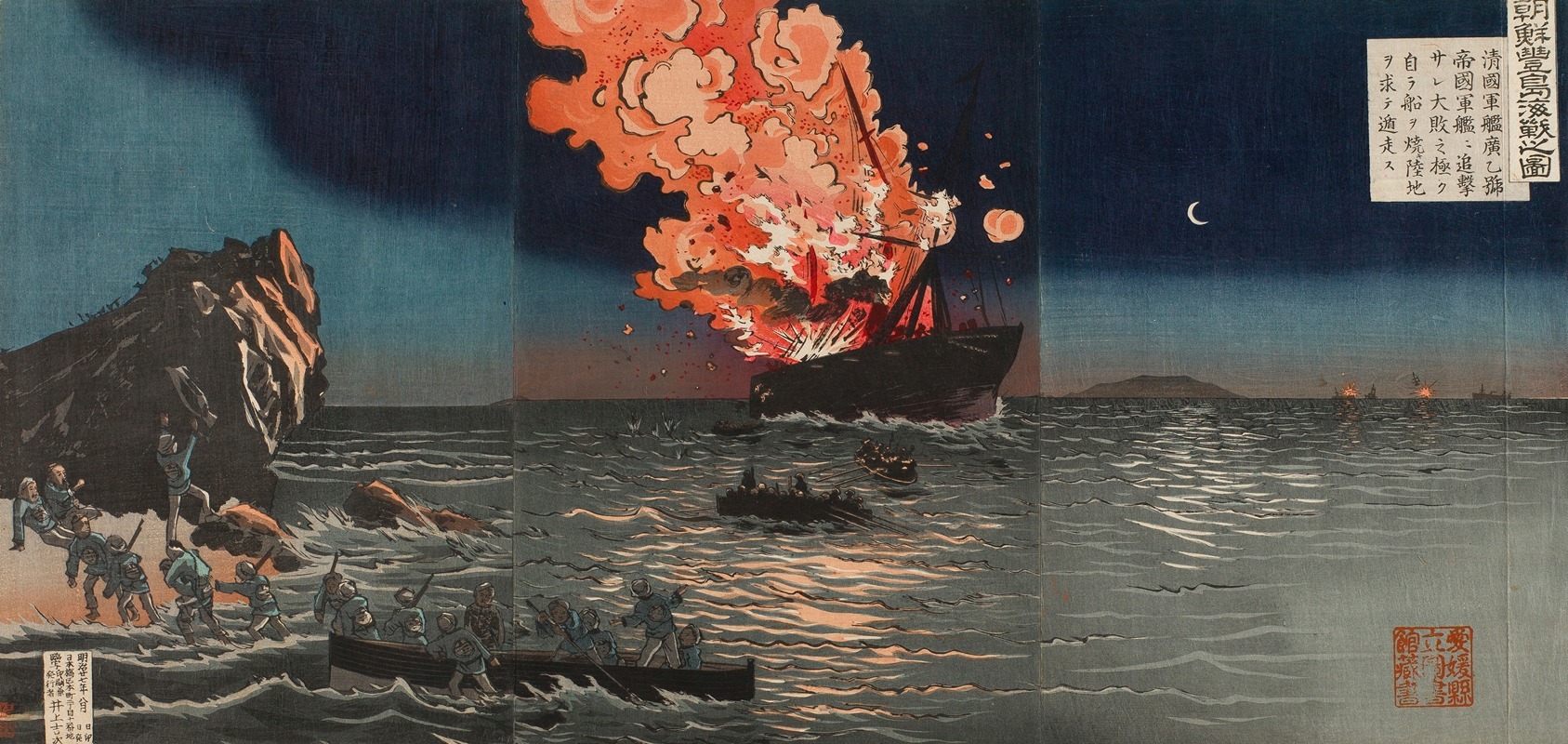
The Naval Battle of Pungdo in Korea
A hand-painted replica of Kobayashi Kiyochika’s masterpiece The Naval Battle of Pungdo in Korea, meticulously crafted by professional artists to capture the true essence of the original. Each piece is created with museum-quality canvas and rare mineral pigments, carefully painted by experienced artists with delicate brushstrokes and rich, layered colors to perfectly recreate the texture of the original artwork. Unlike machine-printed reproductions, this hand-painted version brings the painting to life, infused with the artist’s emotions and skill in every stroke. Whether for personal collection or home decoration, it instantly elevates the artistic atmosphere of any space.
The Naval Battle of Pungdo in Korea by Kobayashi Kiyochika is a woodblock print created by the renowned Japanese artist Kobayashi Kiyochika (1847–1915). Kiyochika was known for his ukiyo-e style prints, which often depicted scenes of modernity, war, and historical events during the Meiji era in Japan. This particular artwork illustrates a naval engagement that occurred during the First Sino-Japanese War (1894–1895), a conflict between the Qing Dynasty of China and the Empire of Japan over influence in Korea.
The Battle of Pungdo, also known as the Battle of Fengdao or the Battle of Asan, took place on July 25, 1894, near Pungdo Island off the western coast of Korea. It was one of the first naval battles of the war and marked a significant moment in Japan's military campaign. The engagement involved Japanese warships intercepting Chinese vessels that were transporting troops and supplies to Korea. The Japanese fleet successfully attacked and sank the Chinese warship Gaosheng and damaged other vessels, demonstrating Japan's growing naval power and strategic capabilities.
Kiyochika's print captures the dramatic intensity of the battle, showcasing the Japanese fleet in action against the Chinese ships. The artwork reflects the artist's ability to combine traditional Japanese woodblock printing techniques with modern subject matter, emphasizing the technological advancements and military strength of Japan during this period. The use of vivid colors and dynamic composition highlights the chaos and violence of the confrontation, while also serving as a form of wartime propaganda that celebrated Japan's victories.
As with many of Kiyochika's works, this print is not only a historical record but also a reflection of the nationalistic sentiments of the time. It was part of a broader trend in Japanese art and media to glorify the nation's military achievements and assert its emerging status as a modern power on the global stage. The Naval Battle of Pungdo in Korea remains an important example of how art was used to document and interpret historical events, as well as to shape public perception during a transformative era in Japanese history.





